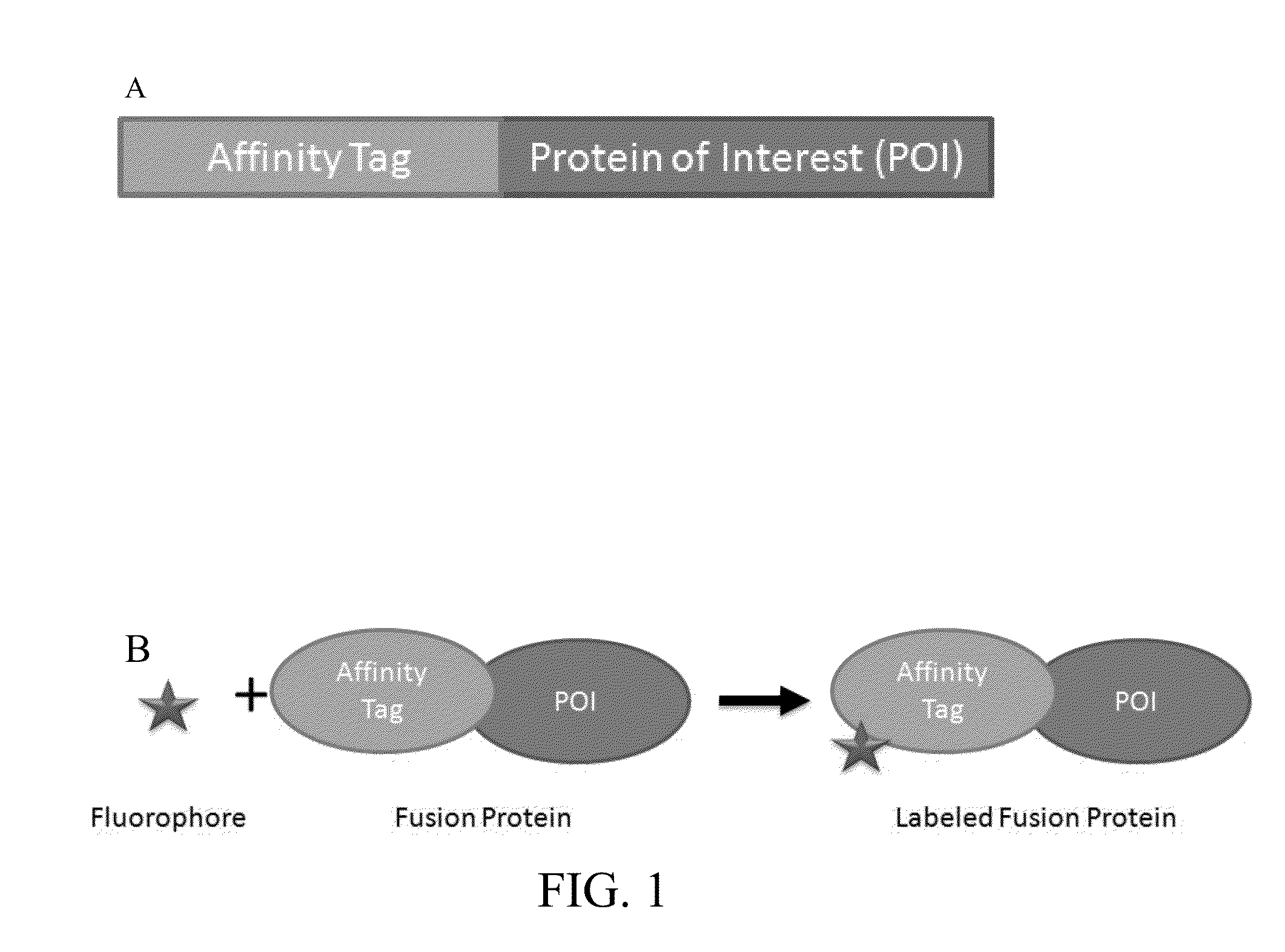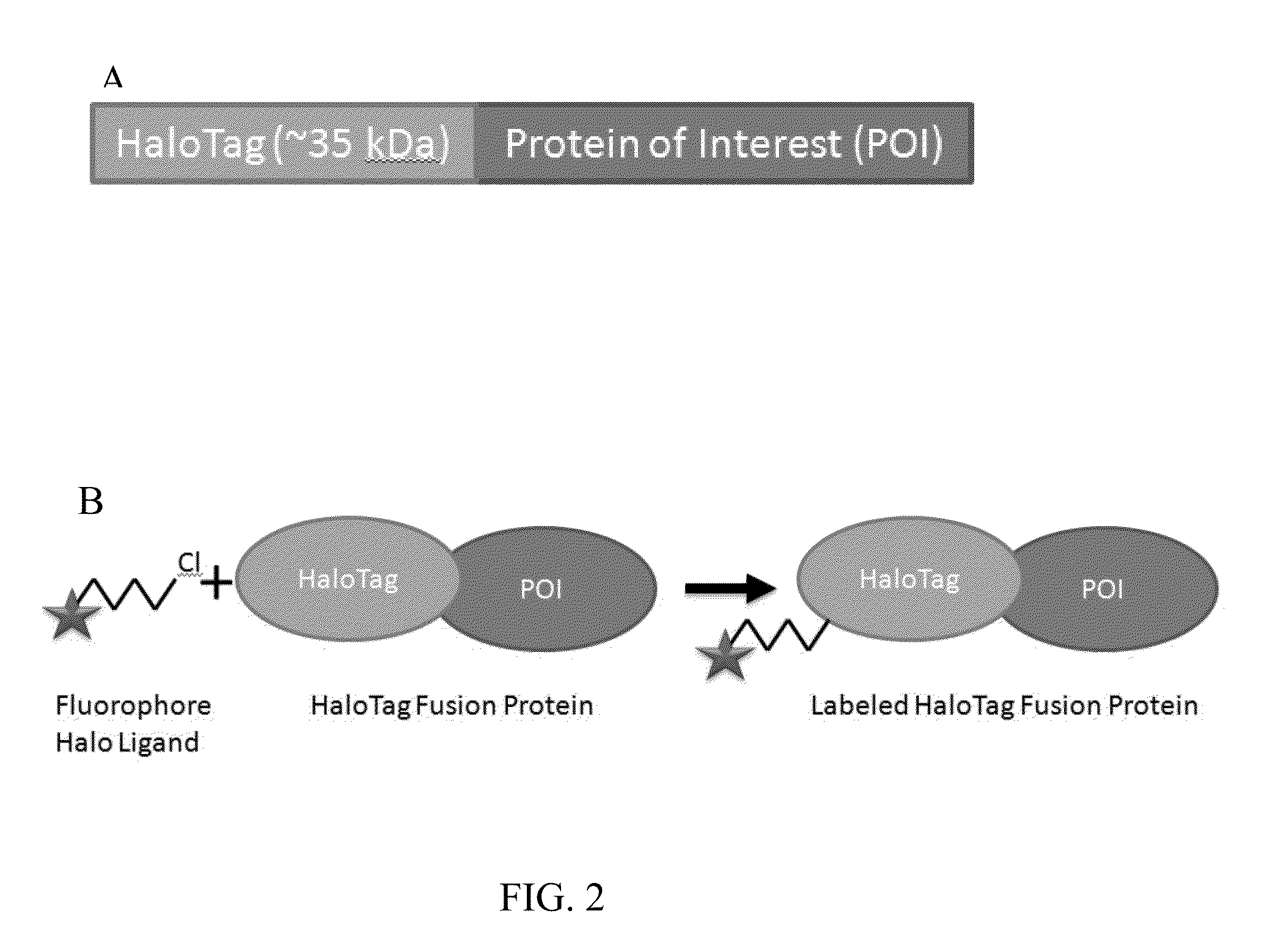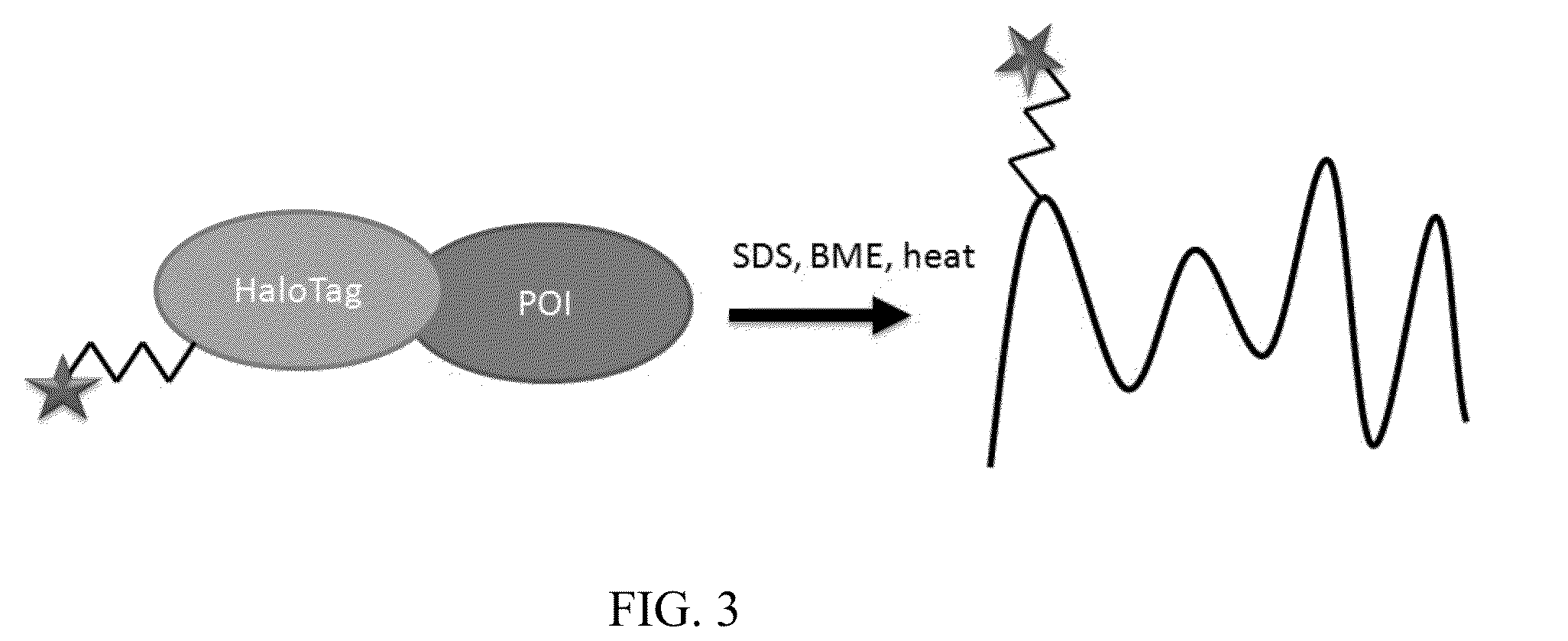High throughput detection of fusion proteins
a fusion protein, high throughput technology, applied in the field of protein detection, can solve the problems of lack of specific poi detection capacity, poor suitability for protein expression screening within complex samples, lack of high throughput process, etc., and achieve the effect of high throughput detection
- Summary
- Abstract
- Description
- Claims
- Application Information
AI Technical Summary
Benefits of technology
Problems solved by technology
Method used
Image
Examples
example 1
[0068]Formation of fusion proteins containing affinity tag and proteins of interest. HaloTag was used as an example affinity tag for all the Examples. However, a person having ordinary skill in the art will understand that any suitable affinity tags will work for the purpose of the present invention. Proteins of interest (POI) were expressed as HaloTag fusions following the following steps. Genes were inserted into an appropriate expression vector that encodes either an N-terminal or C-terminal HaloTag fusion partner. For E. coli expression, the expression vector pCPD_nHalo containing the gene was transformed into E. coli strain BL21 (DE3). A 2 mL culture can be grown in LB media with 50 ug / mL ampicilin at 37° C. until OD600=0.6, and induced with 1 mM IPTG. Expression for 20 hours at 18° C. was sufficient to produce the HaloTag fusion protein. The culture was pelleted by centrifugation at 5000×g for 20 minutes, and resuspended in a standard lysis buffer containing lysozyme and DNase...
example 2
[0071]High-throughput detection of HaloTag fusion proteins in lysate using LabChip. The HaloTag fusion proteins were produced following the same procedure as described in Example 1. LabChip system was purchased from Caliper, and no modifications were performed on the system. The experiment follows an automated protocol according to the technical manual of LabChip.
example 3
[0072]FIG. 11 depicts 32 proteins expressed as N-terminal HaloTag fusion proteins in HeLa cell lysate and incubated with HaloTag-Alexa660 ligand. Expression reactions were denatured and separated by PAGE. (A) Coomassie stain of 1 uL expression reactions; (B) In-gel fluorescence of the same gels prior to Coomassie staining; (C) LabChip virtual gel of collection.
PUM
| Property | Measurement | Unit |
|---|---|---|
| wavelengths | aaaaa | aaaaa |
| wavelengths | aaaaa | aaaaa |
| molecular weight | aaaaa | aaaaa |
Abstract
Description
Claims
Application Information
 Login to View More
Login to View More - R&D
- Intellectual Property
- Life Sciences
- Materials
- Tech Scout
- Unparalleled Data Quality
- Higher Quality Content
- 60% Fewer Hallucinations
Browse by: Latest US Patents, China's latest patents, Technical Efficacy Thesaurus, Application Domain, Technology Topic, Popular Technical Reports.
© 2025 PatSnap. All rights reserved.Legal|Privacy policy|Modern Slavery Act Transparency Statement|Sitemap|About US| Contact US: help@patsnap.com



